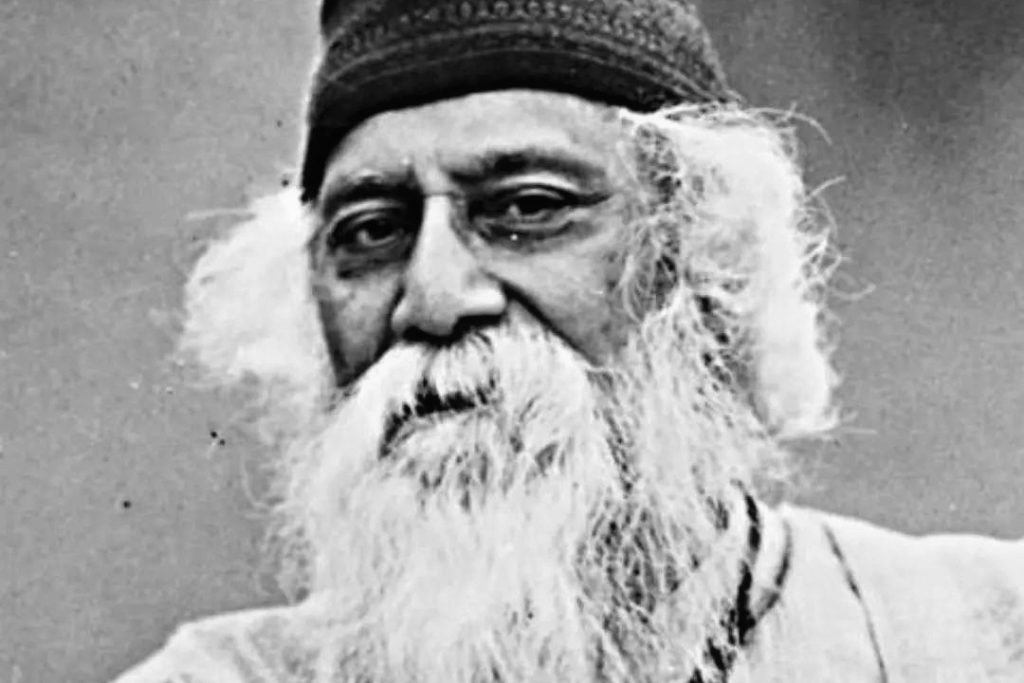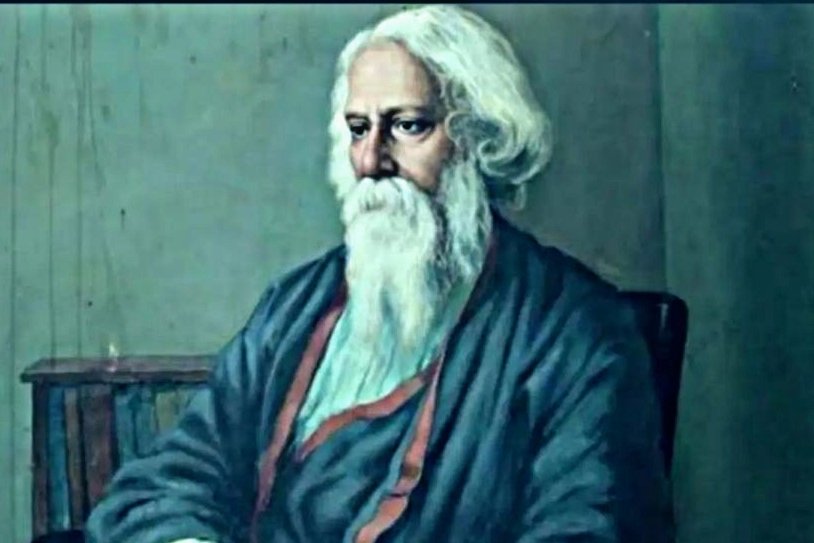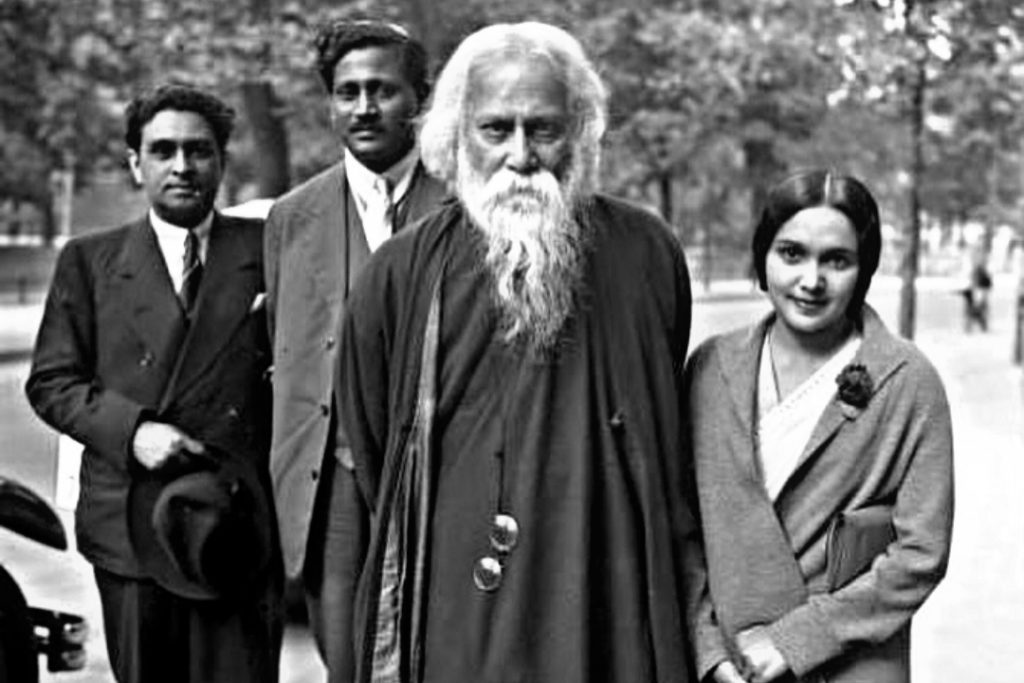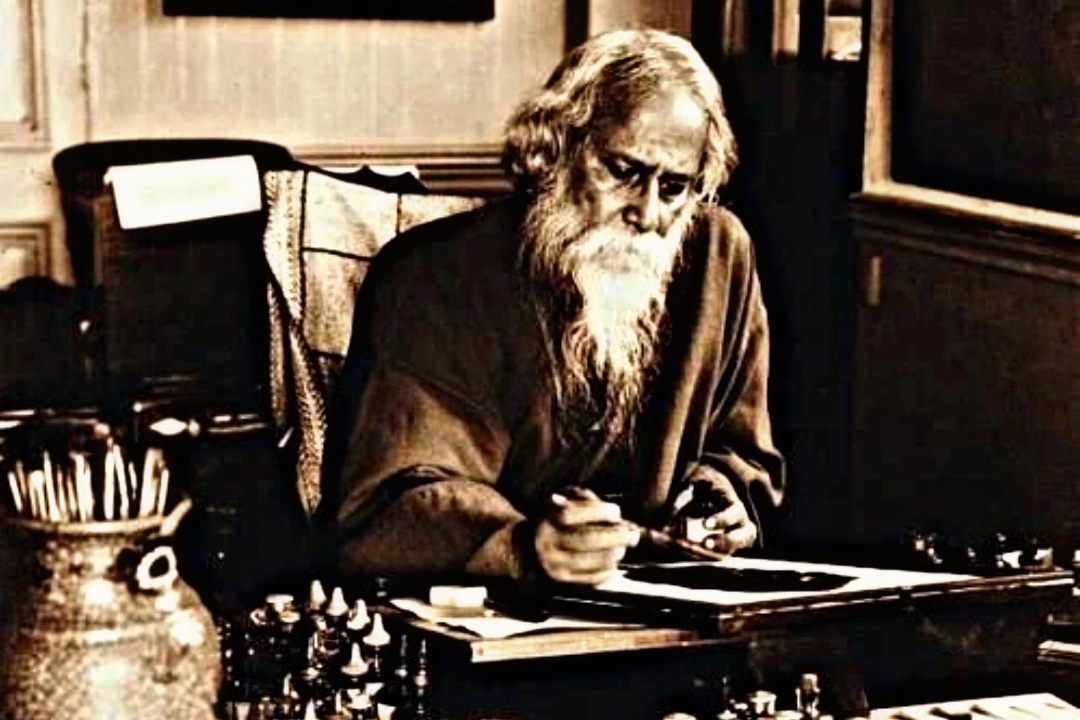Rabindranath Tagore, affectionately called the “Gurudev,” was a polymath whose contributions to literature, music, art, and education earned him a place as one of history’s greatest cultural figures. Born on May 7, 1861, in the Jorasanko Thakur Bari of Kolkata, he was the first non-European to win the Nobel Prize in Literature in 1913. His poetry, songs, essays, and philosophy encapsulated universal themes, making him a global symbol of artistic brilliance and humanitarian ideals. Through his life and works, Rabindranath Tagore left an indelible impact on the world, transcending the boundaries of language, culture, and nationality.
Early Life and Upbringing
Rabindranath Tagore was born into the distinguished Tagore family, known for its cultural and intellectual pursuits. His father, Maharshi Debendranath Tagore, was a philosopher and key figure in the Brahmo Samaj, a socio-religious reform movement. His mother, Sarada Devi, instilled in him an appreciation for tradition and values.
Rabindranath Tagore grew up in an environment that nurtured creativity and intellectual curiosity. His early education was unconventional; instead of attending formal school, he was tutored at home. This method allowed him the freedom to explore his interests in literature, art, and music. By the age of eight, he was writing poetry, and his literary talent blossomed rapidly.
Youth and Exposure to Western Ideas
In 1878, Rabindranath Tagore traveled to England to study law at University College London, following his family’s wishes. However, his passion for literature and music soon took precedence. He immersed himself in English literature, drawing inspiration from authors like Shakespeare, Shelley, and Byron.
Although he did not complete his formal education, his time in England broadened his horizons, exposing him to Western philosophies and aesthetics. This fusion of Eastern and Western influences would become a hallmark of Rabindranath Tagore’s works, enabling him to resonate with audiences across cultures.
Literary Career and Works

Rabindranath Tagore’s literary career spanned over six decades, encompassing poetry, novels, essays, short stories, and plays. His works reflect an extraordinary range of themes, including love, nature, spirituality, and the human condition.
Poetry
Rabindranath Tagore’s poetry is renowned for its lyrical beauty and philosophical depth. His magnum opus, Gitanjali (Song Offerings), earned him the Nobel Prize in Literature in 1913. The collection captures his spiritual quest and reverence for nature, blending simplicity with profound insights.
Other notable poetry collections by Rabindranath Tagore include:
- Sonar Tori (The Golden Boat)
- Manasi (The Ideal One)
- Balaka (The Flight of Cranes)
Through his poems, Rabindranath Tagore explored the eternal relationship between humanity and the divine, emphasizing universal harmony.
Fiction
Rabindranath Tagore was a master storyteller whose novels and short stories delve into the complexities of human relationships and social issues. His novels, such as Gora, Ghare-Baire (The Home and the World), and Chokher Bali (A Grain of Sand), highlight themes of identity, tradition, and modernization.
His short stories, including Kabuliwala, The Postmaster, and The Hungry Stones, are deeply humanistic, capturing the essence of rural Bengal while addressing universal emotions.
Plays
Rabindranath Tagore was also a prolific playwright. His plays, such as Dak Ghar (The Post Office), Raktakarabi (Red Oleanders), and Chitra, combine lyrical prose with compelling narratives, often addressing social and philosophical themes.
Essays and Philosophical Writings
Rabindranath Tagore’s essays reflect his intellectual depth and vision. Works like Sadhana: The Realisation of Life and The Religion of Man articulate his beliefs in universalism, spirituality, and the unity of humanity.
Music and Rabindra Sangeet

Rabindranath Tagore was a prolific composer, creating over 2,000 songs collectively known as Rabindra Sangeet. These songs are an integral part of Bengali culture, blending classical Indian music with folk traditions and Western melodies.
His compositions often evoke profound emotions and explore themes of love, nature, devotion, and patriotism. Two of his songs became national anthems:
- “Jana Gana Mana” – National Anthem of India
- “Amar Shonar Bangla” – National Anthem of Bangladesh
Artistic Endeavors
In his later years, Rabindranath Tagore turned to painting, producing a remarkable collection of works characterized by bold lines and abstract forms. His art, like his literature, defied convention and showcased his boundless creativity.
Educational Reforms: Shantiniketan and Visva-Bharati
Rabindranath Tagore believed in holistic education that nurtures creativity, ethics, and a connection to nature. In 1901, he founded Shantiniketan, a school in Bolpur, West Bengal, as an alternative to rote learning. The institution emphasized experiential learning and cultural exchange, fostering creativity and critical thinking.
In 1921, Shantiniketan evolved into Visva-Bharati University, envisioned as a global center for learning and cultural dialogue. Rabindranath Tagore described it as a place “where the world meets in one nest.”
Philosophy and Universalism
Rabindranath Tagore’s philosophy was deeply rooted in the Upanishads and Indian spiritual traditions. He believed in the interconnectedness of all life and the pursuit of harmony between individuals and nature.
He was a staunch advocate of universalism, rejecting parochialism and sectarianism. His vision extended beyond national boundaries, emphasizing the shared spiritual aspirations of humanity.
Political Views and Nationalism

Rabindranath Tagore’s relationship with Indian nationalism was nuanced. While he supported India’s struggle for independence, he criticized aggressive nationalism, advocating for a more inclusive and spiritual approach to freedom.
In 1919, he renounced his knighthood in protest against the Jallianwala Bagh massacre, a symbolic act of defiance against British colonial rule. However, he also cautioned against the dangers of extreme nationalism, believing it could lead to divisiveness.
Global Recognition and the Nobel Prize
Rabindranath Tagore’s Nobel Prize in Literature in 1913 brought Indian literature and culture to the global stage. His works were translated into multiple languages, earning admiration from literary giants like W.B. Yeats, Ezra Pound, and Romain Rolland.
Rabindranath Tagore traveled extensively, visiting countries like the United States, Japan, China, and various European nations. Through his lectures and writings, he advocated for cultural exchange and universal harmony.
Personal Life and Losses
Rabindranath Tagore’s personal life was marked by both joy and tragedy. He married Mrinalini Devi in 1883, and the couple had five children. However, he faced profound personal losses, including the deaths of his wife, two children, and other close family members.
These experiences deepened his philosophical outlook and inspired some of his most poignant works.
Legacy and Continued Relevance
Rabindranath Tagore’s legacy endures as a symbol of artistic excellence, intellectual brilliance, and spiritual insight. His works continue to inspire generations, offering timeless reflections on love, nature, and humanity.
Shantiniketan stands as a testament to his vision for education, while his songs and writings remain integral to Bengali culture and global literature.
Conclusion
Rabindranath Tagore was not just a poet or philosopher; he was a visionary who believed in the transformative power of creativity and spirituality. His life and works bridge the gap between the local and the global, the traditional and the modern, the individual and the universal.
As we reflect on the legacy of Rabindranath Tagore, we are reminded of the enduring relevance of his message: a call for unity, compassion, and the celebration of life’s beauty.
Quora Question On Rabindranath Tagore
1. Which poem of Rabindranath Tagore is the most beautiful one?
Gitanjali (especially “Where the mind is without fear”) is often considered one of Rabindranath Tagore’s most beautiful and profound poems, celebrated for its universal message of freedom and enlightenment.
2. What’s the first poem written by Rabindranath Tagore?
Rabindranath Tagore wrote his first poem, Abhilash (Desire), at the age of eight.
3. How famous is Rabindranath Tagore in Bangladesh?
Rabindranath Tagore is immensely revered in Bangladesh. His song Amar Shonar Bangla is the country’s national anthem, and his works are integral to Bengali culture and literature.
4. What are the contributions of Rabindranath Tagore to Indian Society?
Rabindranath Tagore enriched Indian society through his literature, music (Rabindra Sangeet), educational reforms (Shantiniketan and Visva-Bharati), and philosophical ideas of universalism, cultural unity, and harmony.
5.What are the contributions of Rabindranath Tagore to Indian culture and literature?
Answer
Rabindranath Tagore, one of India’s greatest cultural icons, made monumental contributions to Indian literature, music, education, and philosophy. His works and ideas have left an indelible mark on Indian society and global culture. Here are some of his significant contributions:
1. Literature
Rabindranath Tagore was a prolific writer whose works spanned poetry, novels, essays, plays, and short stories.
- Nobel Prize in Literature (1913): Tagore was the first non-European to receive the award for his collection Gitanjali (Song Offerings), which is known for its spiritual and philosophical depth.
- Poetry: His poetry collections, such as Gitanjali, Sonar Tori (The Golden Boat), and Balaka (The Flight of Cranes), are celebrated for their lyrical beauty and universal themes.
- Novels and Short Stories: Tagore explored complex human emotions and social issues in works like Gora, Ghare-Baire (The Home and the World), and short stories like Kabuliwala and The Postmaster.
2. Music and Rabindra Sangeet
- Over 2,000 Songs: Rabindranath Tagore composed songs collectively known as Rabindra Sangeet, blending classical Indian music with folk traditions and Western influences.
- National Anthems:
- “Jana Gana Mana” – Adopted as the National Anthem of India.
- “Amar Shonar Bangla” – Adopted as the National Anthem of Bangladesh.
His music continues to be an integral part of Bengali culture and is cherished for its emotional depth and melodic richness.
3. Educational Reforms
- Founder of Shantiniketan (1901): Tagore established this school as an alternative to rote learning, emphasizing creativity, critical thinking, and a connection to nature.
- Visva-Bharati University (1921): This institution became a hub for cultural exchange and interdisciplinary learning, embodying his vision of “where the world meets in one nest.”
4. Art and Painting
In his later years, Tagore ventured into painting, creating unique and bold works that showcased his artistic innovation. His paintings were exhibited internationally and added another dimension to his creative legacy.
5. Social and Political Thought
- Critique of Nationalism: While supporting India’s independence, Tagore warned against aggressive nationalism and emphasized universal human values.
- Jallianwala Bagh Protest: He renounced his knighthood in 1919 to protest the massacre, symbolizing his commitment to justice.
6. Philosophy and Spiritual Vision
Tagore’s philosophy centered on the unity of humanity and the harmony between man and nature. His writings in Sadhana: The Realisation of Life and The Religion of Man articulate these ideas, emphasizing universalism over parochialism.

